Fireline Versus Wildfire Beading Thread: What’s the Difference?
A couple of weeks ago, Hazel asked a very interesting question: what is the difference between Fireline and Wildfire? And how do you know which to use? So, I’m here to take a look… Let’s size up Fireline versus Wildfire beading thread…
What are Fireline and Wildfire Beading Threads?
Before I get on to the all-important comparison, let’s make sure you know what I’m talking about.
Both Fireline and Wildfire are thermally bonded threads. Basically, they are fishing line! So, if you’ve never used this type of thread, it feels very different to a nylon-based thread.
I guess the best way to try and describe it would be to say it has a plastic look and feel. Whereas nylon-based threads are very soft and floppy, rather like sewing thread, the bonded threads have a bit of ‘body’ to them. So, they may not drape quite as well if you’re looking at using them for stringing or adding fringe.
They are brilliant for any project that needs good tension because they don’t stretch. So, you can feel pretty secure that your work will retain its shape over time.
Fireline and Wildfire are also super-strong. They rarely break (in my experience), and they are great for using with sharp-edged beads, like crystals or bugles, which might normally tear thread.
These threads are also pretty difficult to knot. So, that’s a huge bonus when it comes to working. I find I get a lot fewer knots and tangles with the thermally bonded threads.
The down-side of that is you may have issues if you are trying to create secure knots to start or finish thread ends. It’s not impossible, but you will also need to weave in well, not just rely on a knot, which can work itself undone.
If you want to avoid that problem all together, then you might consider this method of joining bonded beading threads.
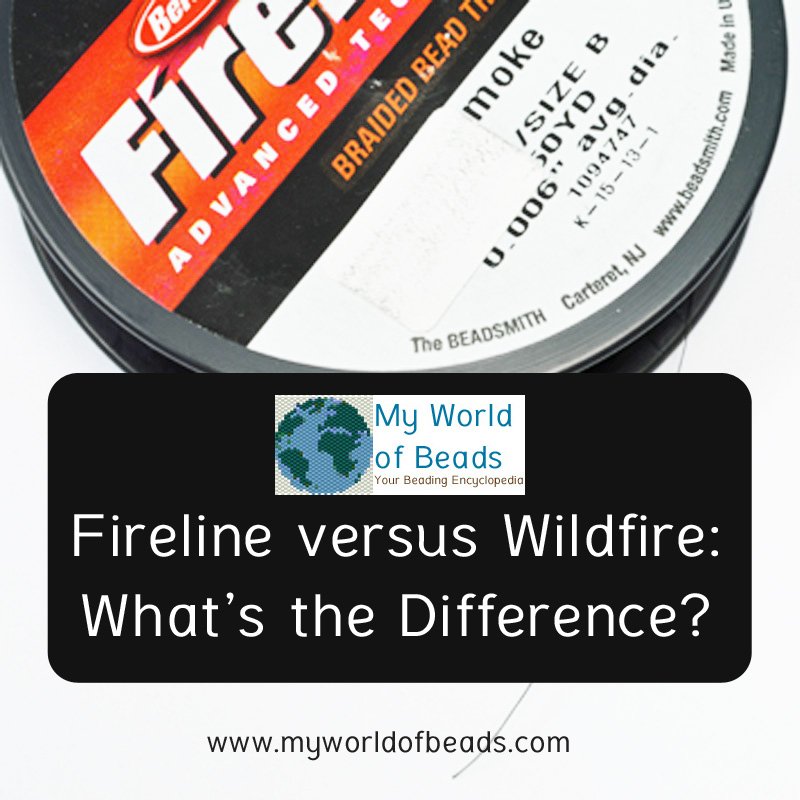
Fireline Versus Wildfire Beading Thread
So, what exactly is the difference between these two bonded threads?
Brand
First, they are made by different manufacturers. So, I’m sure each of these have their own proprietary method of creating the thread.
Fireline is manufactured by Berkley, who work primarily in the fishing industry. The Beadsmith purchases this fishing line from Berkley, and brands it under the Beadsmith brand for sale to wholesalers in the beading and craft industry. So, that explains why you may see either Berkley, or Beadsmith branding (or both) on your reels of Fireline.
Wildfire thread is manufactured by Beadalon. They have huge expertise in manufacturing all kinds of bead threading materials. You may have seen this blog about wire for stringing beads, in which I mentioned that product by Beadalon.
Colour
The second major difference is all about colour.
Fireline thread is basically available in three colours: crystal, black, and smoke (that’s a very dark grey – almost black).
Wildfire has a bigger range of colours available. These include blue, red, green, in addition to the basic white and black.
There is still not as much variation in colours as you will get with nylon based threads, like KO or Nymo. But, I would expect to see more colour development as there is more call for it in the market.
Interestingly, because of the nature of these threads, the colours blend better with the beads than you might imagine. So, I find myself using crystal Fireline for most beads – unless they’re black or very dark, in which case I would use the black Fireline.
And bizarrely, the green Wildfire seems to tone very well to most bead colours!
Size
Both brands come in a variety of sized spools (that’s the length of thread you get).
But Fireline has a greater variety of weights and thicknesses.
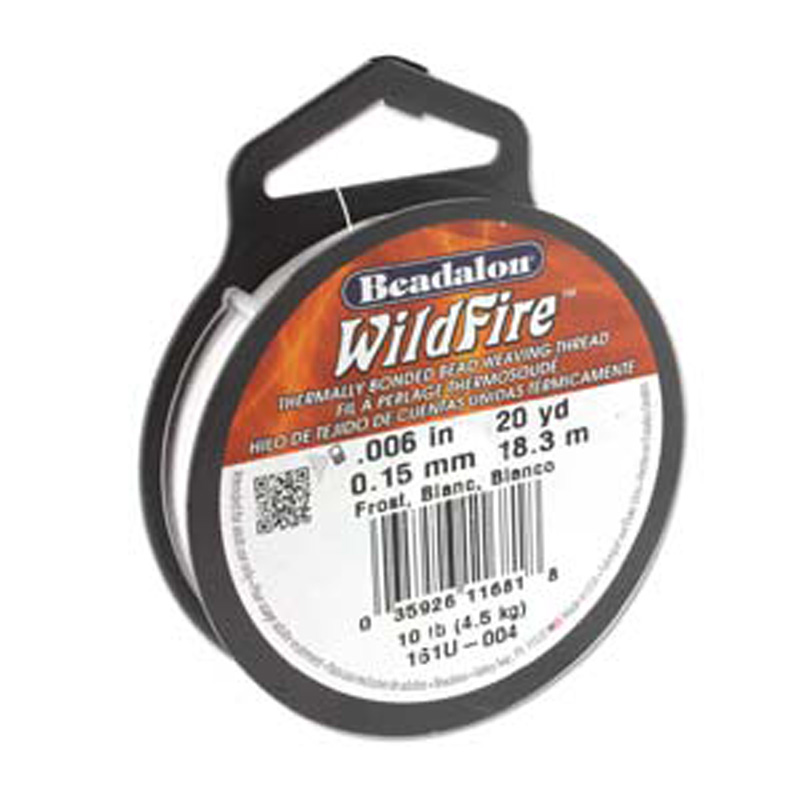
On both types of thread, you will find a range of information. In the image of the Wildfire reel above, you can see “.006in” and “0.15mm”. These are the measurements of the width of a single strand of thread. So, this is the important measure when you are choosing your thread. If you are working with small beads, or need to make multiple thread passes through your beads, then you want a fine thread. So, check the ‘diameter’ measurement on your spool.
Then, you also have a 10lb measurement at the bottom of the spool. This is basically the weight that a single piece of thread will carry without breaking.
Since you will mostly be using this kind of thread for bead-weaving, this weight measurement is less important. Seed beads don’t weigh that much, so you’re never going to be in danger of ‘overloading’ your thread. That measure would be more critical if you were planning on going fishing… You’d need to know how big a fish your fishing line would support.
You can see the same information is available on a spool of Fireline.
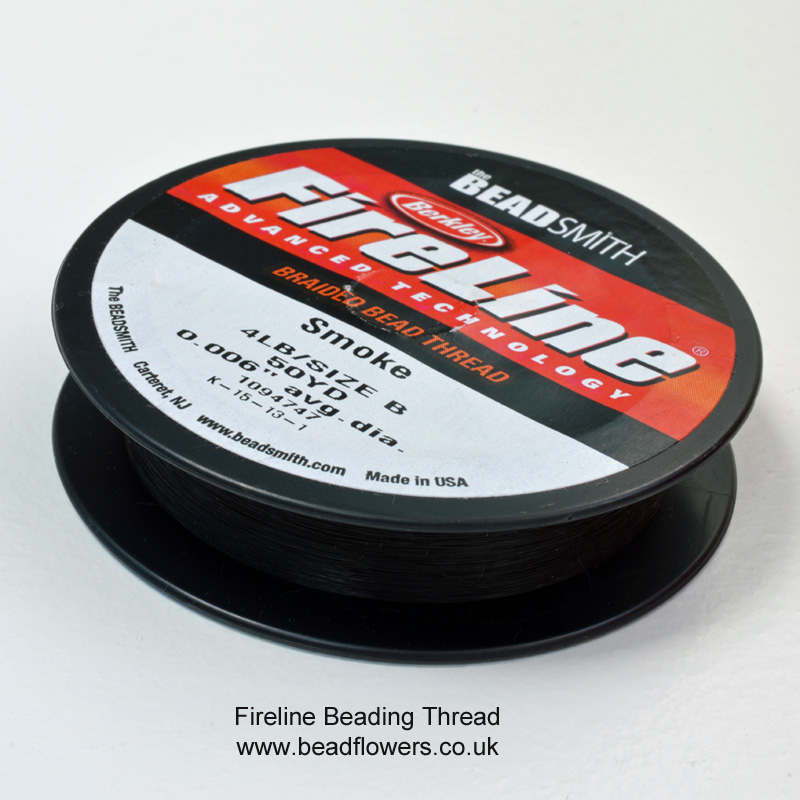
Which thread should you choose?
If you’ve done any amount of beading, you will have discovered that different beading threads feel different. You will find some easy and comfortable to use. Others may cause you more problems.
You will also have noticed that most beading tutorials recommend which type of thread to use. So, that takes the decision out of your hands.
But what if nobody has told you which thread to try? Here’s a dilemma: Fireline versus Wildfire beading thread.
As I outlined the differences, I may have given you a few clues to help you make that decision.
Colour
If you are working on a project where your thread is going to be more visible, then colour might be an issue. For example, a stitch like Cubic Right Angle Weave leaves a lot more visible thread, than a stitch like Peyote. (If you need to find out more about different beading techniques, check out this link). So, if you need to match your thread to your beads, Wildfire will give you more options.
Size
If the diameter of your thread is going to be an issue, then you have more range of options in Fireline.
Beyond that, I can only recommend that you try both brands and see which feels comfortable to you.
Other considerations
I have talked about this more in other blog posts, but choice of beading thread is very personal. The way in which a thread behaves is different for everyone. Tiny factors like how you pull your needle through your work, your natural tension, even the oils on your skin, can all affect how a thread behaves.
So, asking different designers to tell you ‘the best’ beading thread is rather like asking all your friends to tell you ‘the best’ film. Everyone will give you a different answer. And ‘the best’ for them may not be ‘the best’ for you.
So, I recommend you try out different options and see what feels comfortable. You’re probably going to end up using a mix of threads. Most people find particular threads work best on particular projects (again, no set rules there). Just explore and be open to discovering new favourites to use alongside your tried and trusted beading thread.
And if you’re ready to begin exploring, you can use this link to buy both Fireline and Wildfire beading thread today.
Would you like more beading tips and advice?
I hope this look at Fireline versus Wildfire beading thread has helped you. I have more blog posts on other types of beading thread at this link. So, you can explore those to help guide you as you discover your own thread preferences.
As I said, in the beginning, I wrote this post in answer to a beader’s question. So, if you’ve got a burning question, I can help you too. First, just make sure I haven’t already answered it, by checking out all the posts in the ‘Beads Index’.
If you can’t find an answer, then use this link to ask your question. And remember, if you want to be sure you get the answers, join my mailing list (click on the image above), to help you become a better beader. You get a monthly newsletter with all the latest blog posts, links to patterns, discount coupons, and more. Basically, everything you need to improve your beading skills, no matter what level you’re at right now.
So, thanks for reading and happy beading! Let us know about your personal thread choices in the comments down below.




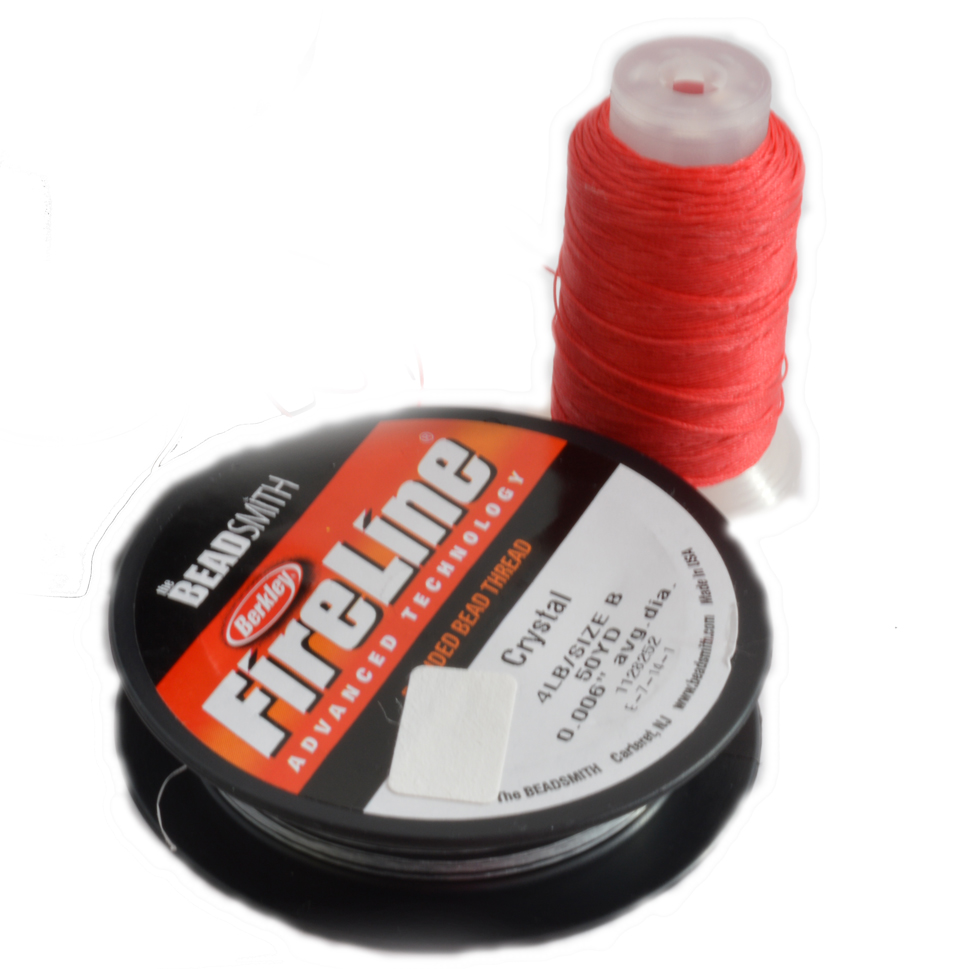

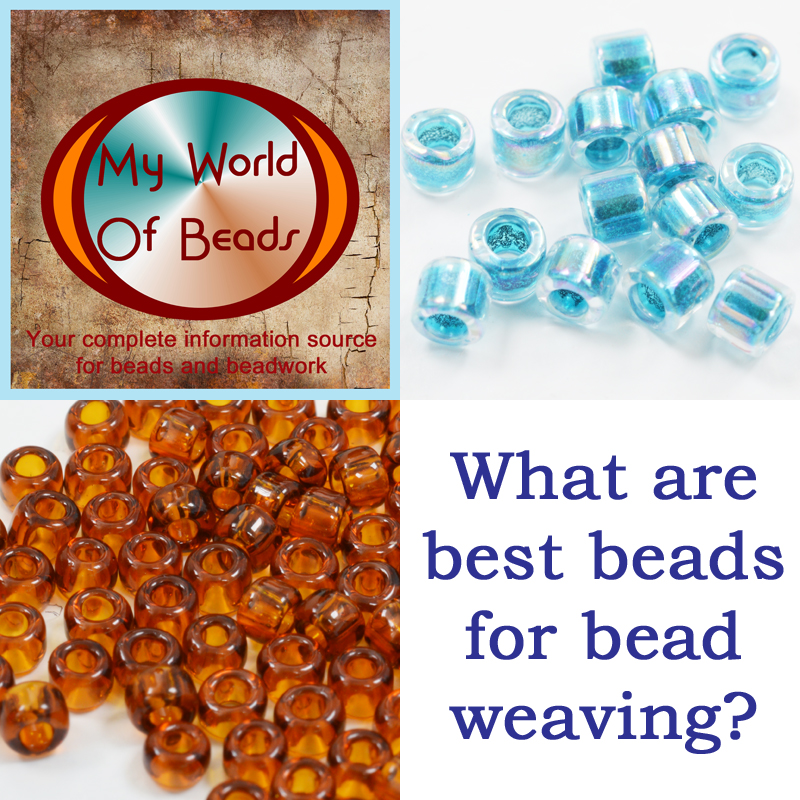






That was interesting, i do use both Wildfire and Fireline, depends which one \Jewellerymaker has on offer or in the kits that i buy lol
That’s great, Jane! I’m all in favour of using and trying different thread types and I know you’ll get plenty of options in various kits, so keep enjoying! 🙂
Thanks for the help Katie.
I do have a problem with the colour of Smoke Fireline transfering to my fingers, leaving the thread much lighter, even making a bracelet but have been told the problem has been fixed in new spools. Do you know if this is true please? Also any ideas on how to reduce the colour transfering would be appreciated. On a cuff the thread is usually white by the end!
Hi Hazel – I’m glad if that was helpful. I understand the problem here! I’m afraid I haven’t yet tried any of the newest spools (I don’t think…if I have, then the problem hasn’t been completely fixed!). I get the transfer as well, and the more ‘use’ the thread has on a project (e.g. if I do a lot of frogging and re-stitching), the more the dye is lost. I think the problem may also vary from person to person – depending on the chemical makeup of our skin. Sadly, that’s not something any of us can control, but I do have a little trick you can try…the dryer sheet hack! I wrote a blog on that a while back, so you can check that out here: https://www.myworldofbeads.com/dryer-sheet-hack-for-beading/
Hope that helps, and thank you for a great question!
Katie
Try pulling the thread between tightly pinched soft tissue several times until the “smoke” all rubs off the thread onto the tissue. I have used this technique successfully for years.